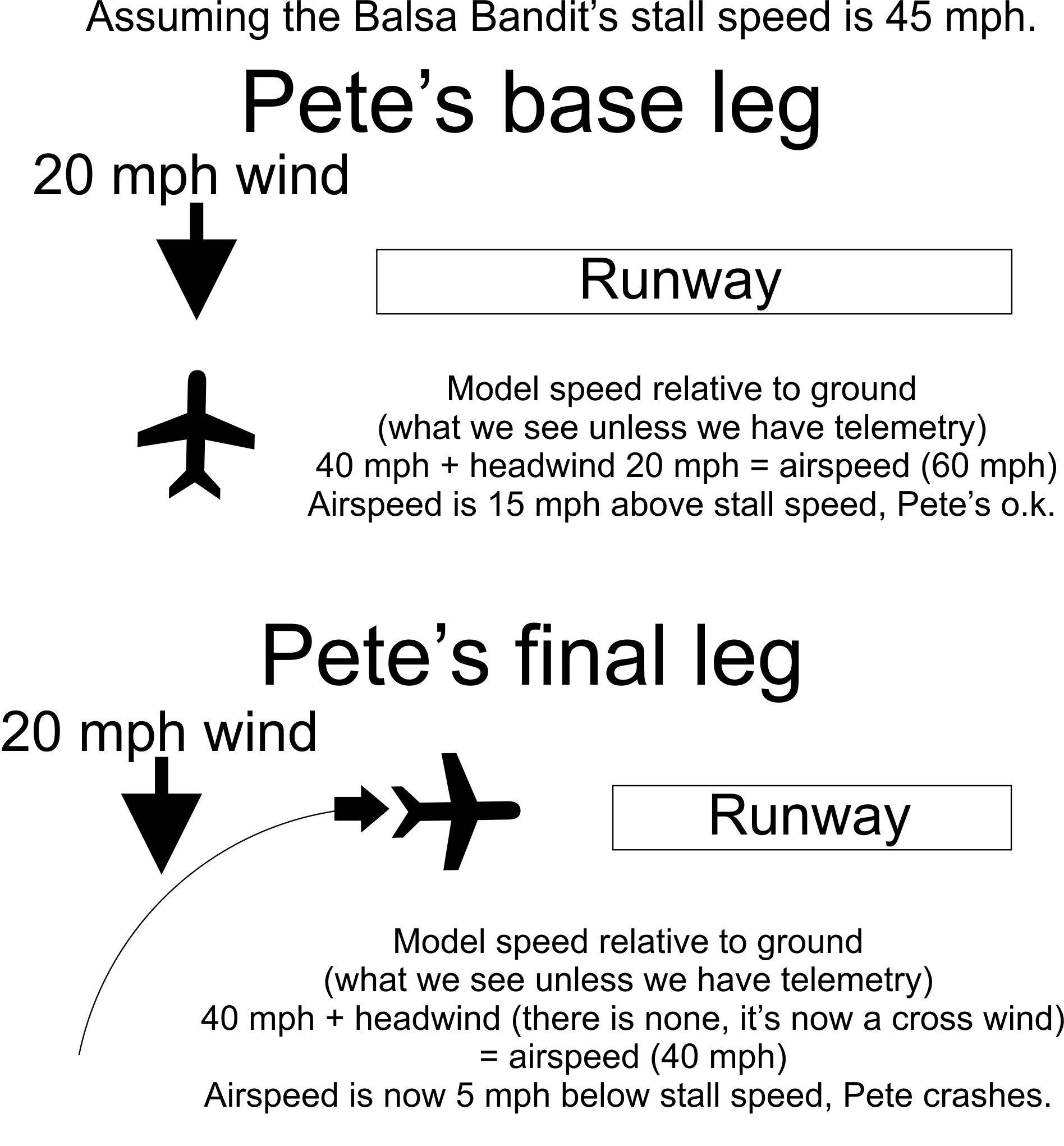
Originally Posted by
Boomerang1 
It's significant.
Into wind on base means increased airspeed, when Pete turned to land crosswind
his airspeed was reduced increasing the risk of stall.
Extra fuel, extra weight means more airspeed required for the wings to support the model.
Turning pulls G's, effectively making the model even heavier, more airspeed required for the wings to support the model.
That's the bad news.
The good news?
Flap effectively increases the incidence of that section of the wing (the middle) meaning the middle was more likely to stall
before the tips, less chance of it snapping.
That's my thoughts, hope this doesn't turn into a 'down wind turn' thread going for forty pages!

John.
Here we go again U just do not under stand aero dynamics. Air speed is air speed into the wind with the wind or cross wind a planes air speed is always the same with a given power setting and steady rate of decent or climb or level..... That air plane doesn't know there is a steady wind ... it's like a ship on the ocean it does not know there is a current.
Here we go again, U just don't understand geography.
Yes, I understand that air is like a current & yes that airplane doesn't know there is a steady wind & yes it's like a ship on the ocean & doesn't know there is a current. Everything would be fine if the runway & the pilot was blowing downwind at the same speed as the wind but it's not. Like it or not the runway is staying in exactly the same spot. The ship on the ocean is a great example for my argument, not so much yours. Have you ever tried mooring a boat to a wharf in a river with a current? Try to moor the boat going with the current & you sail right past. Your water speed may be zero but you are still moving relative to the fixed point, the wharf. You have to sail down stream, turn around & then motor up to the wharf, reduce the throttle until your water speed equals the current speed then snag the wharf which will be stationary relative to the boat. Exactly the same as flying that old timer model on a windy day, full throttle but going nowhere.
All our flying is done in a moving medium (the air) but relative to a fixed medium (the ground). We judge our speed (unless we use telemetry to monitor airspeed) relative to the ground. That's why we comment on windy days, wow, it flys so fast downwind yet so slow upwind. Fact is the AIRSPEED is the same.
The relationship between the air & the ground is constantly changing unless it is dead calm, so we compensate by flying faster than needed to maintain the airspeed safety margin. I think Pete had too small a margin & crashed as a result as I've drawn below. On a normal approach our turn onto finals is from a crosswind situation to a headwind situation, all relative to the GROUND (our reference point) not that cute, fluffy stream of air wafting down the paddock. As we turn into the wind on finals our airspeed relative to ground speed (which we use to judge our model's speed) goes up & our safety margin increases.
When Pete turned from a headwind situation relative to the GROUND to a crosswind situation his airspeed relative to the ground speed (which we use to judge our model's speed) was reduced & his safety margin was reduced to a negative figure. Splat!
Why one Bandit was ok & the other crashed is another argument & lots of other variables in aircraft design & setup.
I'm not hanging around for another 48 pages of this! - John.
